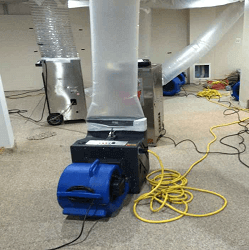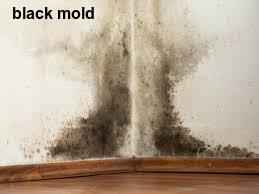Quality, Services : Water Damage Home Dallas Texas
We offer Water Damage Home services in Dallas Texas, call us today!
Your Full-Service, 24 Hour Water Damage Home in Dallas Texas
✅Call (214) 225-3150.When getting in touch with any Water Damage Dallas Texas Home contractor, a lot of the time, that's all they can take care of is water damage. That indicates they will can be found in as well as do your water damage restoration and extraction leaving you to get the pieces. At 24/7 Catstorng LLC, we do so far more than that. We are your full-service water mitigation firm aiding you from the factor you call us up until your home or office is back to its original problem.

What Goes Into Dallas Water Restoration?
When a house is damaged because of fire or smoke a reconstruction company might use the complying with solutions to their customers; storage of household goods, cleaning, upkeep of the houses supply both endangered and also non-restorable, elimination of components, deodorization, repair, emergency securing of the scene, packing, furniture refinishing and also reupholstering as well as repair service of electronic devices and devices.What does a flood restoration company do?
Flooding repair solution can successfully as well as successfully fix the carnage triggered by flooding as well as give you with water damage reconstruction that will leave residence, home furnishings, and also belongings clean, completely dry, and ready for business, laid-back living.Previously Dallas Texas flooded roads were lined with water-damaged furnishings as well as roadways filled with cars as residents went searching for cleaning up products, insurance coverage estimates as well as fixing help.
Having a professional Water Damage carpet cleansing conserves you a substantial headache when a water harmed carpet is involved and bring your carpet to life with carpeting repair service and also fail to remember the hassle of cleaning it yourself and also require a detailed as well as expert rug cleansing.
What is water damage repair? - Home Dallas Texas
Trigger repair service of broken or worn-out roofing products by a professional roofing contractor will certainly assist protect against interior water damage as well as mold damages in Dallas. Catstrong water damage restoration, drying, deodorization, purification, disinfection, water damage fixing, restoration as well as repair of property as well as commercial buildings damaged by fire, water and other disasters by a network of skilled experts, service technicians as well as remediation. Carpet repair work experts have accessibility to tools and approaches that will extensively clean your water damaged rug as well as remove mold that may have resulted.-
water damage home
-
water damage inspection
-
water damage near me
-
water damage restoration
-
water damage types
-
water damage restoration services
-
water damage iicrc standard
-
water damage restoration tips
-
water damage damage water
-
water damage insurance cover water
-
water damage repair
-
water damage articles
-
water damage restoration water removal
-
water damage homeowners insurance cover
-
water damage insurance
-
water damage cover
-
water damage house
-
water damage extraction
-
water damage removal
Dallas Texas Water Damage Chruches Dallas Texas 75006
Just how are water damage contents cleaned?
Rug repair service professionals in Dallas are accredited in a selection of locations when it involves rug cleansing, among them being the handling and also cleansing of water damaged rugs. When it pertains to a water harmed carpet, fail to remember doing the rug repair yourself and also get a Water Damage specialist rug cleaning in Dallas. We use a large range of services like: mold fire, water and also removal damages repair work, carpet cleaning, basic building and many various other water damage solutions in Dallas.No matter where the destruction originates from, be it natural flooding, ruptured pipelines, or substantial rain storms without adequate drain, water damage reconstruction professionals have the tools, treatment, as well as experience programs that remove wetness in the residence and dramatically lower the probability of mold in wall surfaces, floors, and also duct. A water damaged carpet needs expert rug repair work to bring it back to its former state of being a clean carpet. A reconstruction specialist can regulate mold and fix the water damage.
What to look for in a water damage Water Damage company?
Is a reputed water damage remediation company supplying effective services for water damage fixing in numerous components of Dallas, Texas. If you are living within Dallas, Texas flood-zone location, far better make a very early booking with Catstrong; you can ask about water damage reconstruction in Dallas, water damage elimination, storm damage fixing, and flooding damage repair in Dallas. Our specialists at Catstrong LLC DallasTexasprovide house owners with satisfaction via our specialist Water Damage flooding damage clean-up solutions that aids you to tidy up your property that has suffered flooding damage.The following sources give even more details regarding water damages as well as its impacts.
- Fungal Species and Water-Damaged Building Materials: This post describes just how water damage encourages fungi growth on building products.
- Response to Water Damage: The Environmental Protection Agency uses a graph to guide homeowners and entrepreneur in responding to water damages.
- Mold: A Health Hazard: This article from the Federal Emergency Management Agency describes the dangers of mold, which can form when developing materials are revealed to water.
- Water-Damaged Wood Furniture PDF: This resource uses several suggestions for salvaging water-damaged timber furniture.
- Floods and Water Damage: The American Lung Association discusses the health hazards of water damage.
Tidying up After a Flood: The University of Minnesota Extension discusses the safety and security equipment needed and also procedures utilized to tidy up the water damage from a flooding. - Restoration Guidelines and Criteria PDF: This paper consists of info concerning the remediation of companies and also houses damaged by water.
- Cleaning Flood-Damaged Carpets and Rugs: This post provides valuable advice for those that want to conserve their water-damaged carpets as well as rugs.
- Guidelines on Indoor Fungi Removal PDF: This document explains health effects of fungi indoors and discusses proper remediation procedures.
- Types of Water Damage: This write-up clarifies the different types of water damage that can take place in business and domestic buildings.
- Saving Paper Items: This source describes how to protect paper things harmed by water.
- Tips for Safe Flood Cleanup: This source offers safety pointers for individuals who need to tidy up after significant water damage.
Basic Document - View Information Below
I have been very serious about WATER DAMAGE and I really hope you enjoyed our article. So long as you liked our post plz do not forget to pass it around. I take joy in reading our article about WATER DAMAGE.Encircle Releases Game-Changing Moisture Tool
Encircle has launched a new Moisture tool within the Encircle platform to help restoration contractors efficiently document water damage and determine the best course of action to dry the job. Keeping with Encircle’s easy-to-use design, the new moisture tool has an intuitive user-interface that guides technicians as they enter information.
Developed with the help of certified restorers and water loss specialists, Encircle’s Moisture tool facilitates the user through a drying plan, giving restorers a way to visually document the claim.
This visual representation illustrates the mitigation strategy through a moisture map or sketch, helping stakeholders understand what is required to dry the structure. It also includes dehumidifier and air mover calculators that follow the S500 IICRC Standard, helping technicians determine how much equipment is needed on the job.
Even better, the tool features new reports to help insurers and policyholders understand the extent of the loss. Reports are available to all stakeholders on the Encircle Platform as soon as they are created.
“Our Moisture tool bridges the communication gap between insurers and restorers allowing both to make accurate and timely decisions,” noted Paul Donald, CEO of Encircle. “Simplifying the process of documenting a water loss is a game changer for the property claims industry.”
Even techs with little to no background in water mitigation can use the Encircle Moisture tool, allowing experienced technicians and PMs to remotely review their work to ensure that readings and equipment are properly placed. It also features helpful alerts that notify restorers when the dehumidifier is not working, allowing them to proactively mitigate issues.
“Encircle once again outpaces their competition in user experience with their new Moisture tool. Finally, a company in the restoration industry that knows how to create the complete field tech user experience & interface with professional reports. It just keeps getting better,” added Jay Holland, Field Consultant at Restoration 1 Holdings Company.
The new Moisture tool is a key component of the Encircle platform, available now to all Encircle customers.
About Encircle
Connecting the claims process from first notice of loss to claim closed, Encircle helps insurance companies, TPAs, and restoration contractors work collaboratively on one easy-to-use platform. Insurers, TPAs, restorers, and policyholders alike can instantly share pictures, videos, reports, sketches, and more, thereby improving communication and customer satisfaction. Discover how Encircle makes managing claims easy at getencircle.com.
| Mold Inspection Dallas | Mold Testing Dallas | Mold Remediation Dallas |
| Mold Removal Dallas | Water Damage Dallas | Things to do in Dallas |
Industry organizations:
Water Damage Dallas Texas
Dallas Texas Water Removal Services
Dallas Texas Restoration Company Dallas Texas Mold Removal
Dallas Texas Mold Remediation Cost Dallas Texas Mold Removal
Dallas Texas Mold Remediation Dallas Texas Mold Removal Dallas Texas EPA Health Issues Dallas Texas OSHA Dallas Texas Water Damage Catstorng of Dallas Texas Restoration Dallas Texas
Catstrong of -96.76651 - Dallas
Why Choose Us?
- Very Experience
- Open 24 Hours Every day
- Fast Arrival Time
- Competitive Pricing
- Accepting Credit Cards
- Quick and Honest Service
- Excellent Customer Service
- Commitment and Promise
- Embrace New Technology
| Mold Inspection | Mold Remediation |

Services Offered in Dallas Texas | Home
RSP Water Damage Restoration of Austin
2630 Exposition Blvd Suite 229 Austin, TX 78703
(512) 588-2821
https://austin.reconstructionservicepros.com/

